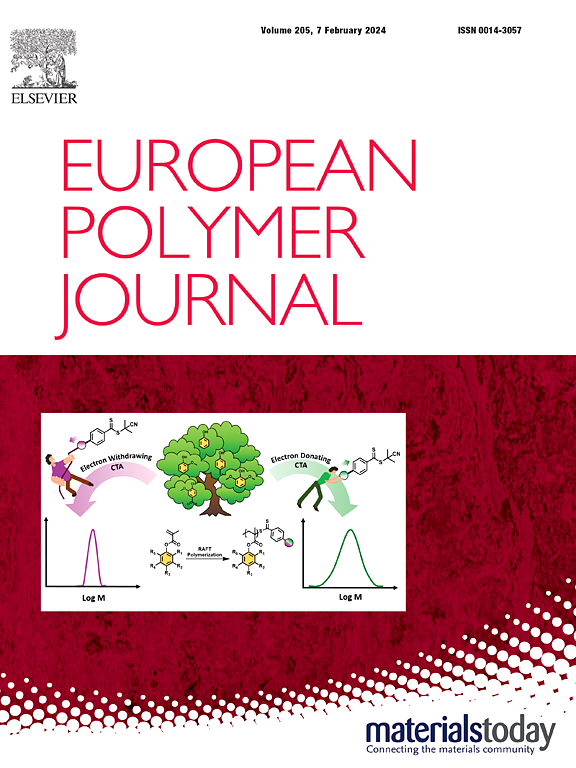Shear thinning and self-healing behavior of an IPN nanocomposite based on gelatin methacryloyl/alginate/nano-clay for cartilage tissue engineering application
IF 5.8
2区 化学
Q1 POLYMER SCIENCE
引用次数: 0
Abstract
Advanced self-healing and shear-thinning hydrogels have garnered significant attention in tissue engineering (TE), especially cartilage TE, due to their tunable and recoverable properties. However, their inadequate mechanical strength negatively affects their application and there is still a lively interest in developing these hydrogels. In this study, we present an innovative interpenetrating polymer network (IPN) nanocomposite hydrogel composed of gelatin methacryloyl (GM), sodium alginate (SA), and nano-clay (NC) with a two-step cross-linking process. The effects of varying NC concentrations on the self-healing, shear-thinning, and rheological properties of the hydrogels were investigated. The GM/SA/NC hydrogels demonstrated remarkable self-healing capabilities, achieving recovery ratios between 93.5% and 95.6% within 120 s of strain application. Notably, these hydrogels recovered 86% to 94% of their original storage modulus immediately upon shear stress removal, highlighting their superior mechanical resilience compared to prior hydrogels. The shear-thinning index (STI) decreased from 1.71 to 1.26, enhancing the material’s processability for TE applications. Additionally, the hydrogels exhibited a robust capacity to withstand cyclic fatigue and recover from damage, solidifying their potential as promising candidates for a variety of TE applications. The resulting IPN nanocomposite hydrogel had desirable characteristics, making it a promising candidate for various TE applications.
−.

求助全文
约1分钟内获得全文
求助全文
来源期刊

European Polymer Journal
化学-高分子科学
CiteScore
9.90
自引率
10.00%
发文量
691
审稿时长
23 days
期刊介绍:
European Polymer Journal is dedicated to publishing work on fundamental and applied polymer chemistry and macromolecular materials. The journal covers all aspects of polymer synthesis, including polymerization mechanisms and chemical functional transformations, with a focus on novel polymers and the relationships between molecular structure and polymer properties. In addition, we welcome submissions on bio-based or renewable polymers, stimuli-responsive systems and polymer bio-hybrids. European Polymer Journal also publishes research on the biomedical application of polymers, including drug delivery and regenerative medicine. The main scope is covered but not limited to the following core research areas:
Polymer synthesis and functionalization
• Novel synthetic routes for polymerization, functional modification, controlled/living polymerization and precision polymers.
Stimuli-responsive polymers
• Including shape memory and self-healing polymers.
Supramolecular polymers and self-assembly
• Molecular recognition and higher order polymer structures.
Renewable and sustainable polymers
• Bio-based, biodegradable and anti-microbial polymers and polymeric bio-nanocomposites.
Polymers at interfaces and surfaces
• Chemistry and engineering of surfaces with biological relevance, including patterning, antifouling polymers and polymers for membrane applications.
Biomedical applications and nanomedicine
• Polymers for regenerative medicine, drug delivery molecular release and gene therapy
The scope of European Polymer Journal no longer includes Polymer Physics.
 求助内容:
求助内容: 应助结果提醒方式:
应助结果提醒方式:


